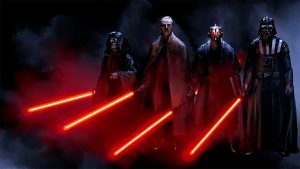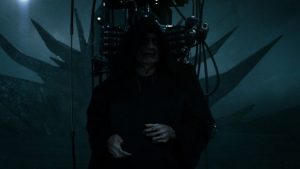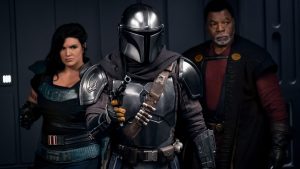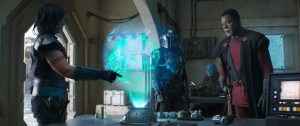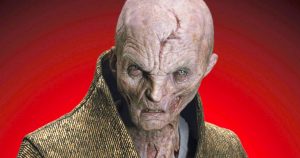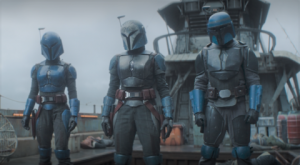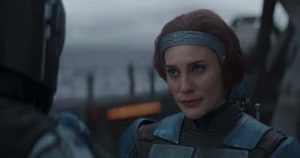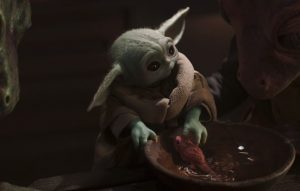As I mentioned while reviewing yesterday’s episode of The Mandalorian, I am a huge fan of the Star Wars: Rebels animated series. I love the entire crew of the Ghost; I get a kick out of seeing Rebels references and Easter eggs pop up anywhere from Rogue One to The Rise Of Skywalker; and today, when it was teased that a major cliffhanger from the Rebels series finale will finally be resolved, I nearly screamed out loud because it’s about time. Whether it happens in future seasons of The Mandalorian or an entirely new spinoff series starring Ahsoka Tano (and Sabine Wren?), we are going to learn the whereabouts of one of Star Wars‘ most enduring antagonists, Grand Admiral Thrawn. And, probably, the lost Jedi Ezra Bridger. This could not get any better.
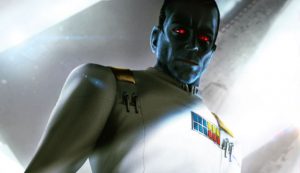
(No wait, actually it could. Please, Disney: cast Rahul Kohli as live-action Ezra Bridger. It’s the fan-cast that dreams are made of, and I will accept nothing less).
So let’s break it down. Even though we went over the basics in my review, I still feel like I have more to say (I always have more to say about Rebels), and anyway, it seems like fans of The Mandalorian are going to need more than a passing knowledge of Thrawn in order to fully understand what he could be up to, so many years after his initial disappearance at the end of Rebels.
Grand Admiral Thrawn, born Mitth’raw’nuruodo, was one of the Empire’s most terrifyingly efficient military leaders and strategists during the fight to suppress the rebellion. He’s been around in Star Wars canon for a long time, first appearing in the 1991 novel, Heir To The Empire. When Disney bought Lucasfilm and erased much of the old canon (now called “Legends”), Thrawn was nearly lost forever – but Dave Filoni swooped in and rescued the fan-favorite character from oblivion, giving him a key role in Star Wars: Rebels as the series’ main antagonist, and ultimate big bad. With his innate ability to strategize several steps ahead, and foresee every plausible outcome, the red-eyed Chiss alien commander is more like a super-computer than a living creature; his most “relatable” quality is his affection for art, which he steals from the worlds he plunders and assembles into a massive private collection.
In the waning years of the Galactic Empire, Thrawn’s attention was turned towards the remote planet Lothal, home to some of the Empire’s most valuable industrial centers. There, shortly before the battle in which the Death Star plans were stolen, setting off the events of A New Hope, Thrawn clashed with the Rebel forces led by Lothal native Ezra Bridger, a young Jedi with a deep connection to animals. All of Thrawn’s intricate plans were foiled by Bridger saving the day in a heroic, and completely unpredictable, act of self-sacrifice – by summoning an entire army of purrgil space whales from the other side of the galaxy. The purrgil grabbed both Thrawn and Ezra Bridger in their tentacles before shooting off into hyperspace at lightspeed, to a destination unknown. The moment leaves everyone – including the audience – in stunned silence, but Bridger’s actions end up saving Lothal: reeling from the loss of Thrawn, the Empire gives up on the backwater planet and turns its focus towards other, more urgent targets, while the core team of Rebels are free to go their separate ways, starting new lives.

And as for Bridger and Thrawn…well, nobody knows. But Dave Filoni has confirmed that both characters survived the space-crossing. Most likely, they exited hyperspace somewhere in the outermost regions of the galaxy (or perhaps even further afield?), and have now spent the last decade or so trying to find their way back. The final scene of Rebels picks up with one of Ezra Bridger’s former crewmates on the Ghost, Mandalorian graffiti-artist Sabine Wren, some years after the fall of the Empire; as she embarks on her own journey to locate Bridger and finally bring him home to Lothal. We know she has help from Ahsoka Tano, who made a promise to Bridger before his disappearance that she would find him. And now, thanks to The Mandalorian, we know a little bit more about Tano’s involvement in this very personal quest.
The general consensus amongst fans is that The Mandalorian‘s latest episode takes place just before Ahsoka and Sabine team up in that final scene of Rebels. It makes sense: the episode ends with Ahsoka learning the new whereabouts of Grand Admiral Thrawn from one of his acolytes, which could give her some hint of where to find Ezra Bridger as well, or at least where to start looking. But if Thrawn is back (and apparently already conspiring with his old allies), that means the New Republic has more pressing concerns than finding Bridger – the Grand Admiral could very well be the mastermind behind other Mandalorian villains like Moff Gideon, and the driving force behind the plan to rebuild the Empire, making him the biggest threat in the galaxy. As I said in my review, I wouldn’t be surprised if we find out that The Mandalorian is all leading up to the story of how Thrawn created the First Order from the remnants of the Empire. This would even line up with Thrawn’s original story arc in the “Legends”, where he set up his own secret empire, united the remaining Imperials in the wake of the Empire’s fall, and battled the New Republic. Much like Palpatine in The Rise Of Skywalker, he cloned himself and became something of a recurring threat long after his actual death.
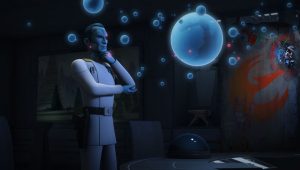
Ezra, meanwhile, can’t be too far off. In fact, The Mandalorian dropped a subtle reference to him in this latest episode, with the sudden (and suspiciously random) appearance of a loth-cat in the streets of Calodan. Loth-cats are native to Lothal, and act as Bridger’s spirit guides throughout Star Wars: Rebels, communicating the will of his planet’s thriving ecosystem. They’re cute and all, but their semi-mystical powers and connections to the Force make them even more fascinating. Interestingly, this is the second loth-cat to show up in The Mandalorian: the first having almost eaten Baby Yoda (back when he was still Baby Yoda) in season one. Is a pattern emerging?
So what do you think? Are you excited to see Thrawn return to Star Wars, and make his live-action debut? Share your own thoughts, theories, and opinions, in the comments below!

